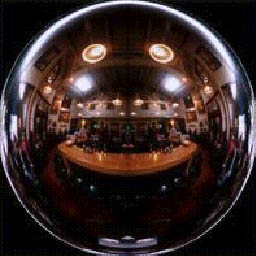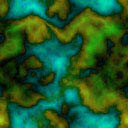The registry is where Windows keeps most of it’s settings. It is also where most programs keep their settings. Ever since it was introduced in Windows 95, it has been a mysterious place where some people have dared to venture in the hopes of finding computing treasure. There are all kinds of articles on how and where to make modifications and tweaks to improve system performance, increase stability, add new features, and other enhancements to the OS.
One aspect of the registry that has been popular is the concept of cleaning or repairing it. The idea that it can get cluttered with traces of old, uninstalled programs, invalid file references, corruption, and manipulation by nasty programs, and that cleaning these out and repairing them, will help a system run better. There is of course truth in this, and making sure that the registry is free of debris is certainly a good thing. Unfortunately, doing so requires some skill and more patience than even the best of us have. It is now a vast storage with more entries than there are stars in the sky. A proper audit would take far too long. As a result, numerous programs have been written to help automate this process. They scan the registry for what they consider to be problems and list them for the user, eager to delete them. Unfortunately, few if any such programs does the job adequately or even properly. Most of them do little more than look for references to files that do not exist. Some will check other components as well, but searching for missing files tends to be the most popular function of these programs.
Modifying the registry is not always as hazardous as some would have you believe. There are plenty of changes that can be done or undone safely. Of course there are some which can make it extremely difficult to fix and can potentially require reinstalling the OS. Making changes to entries without noting what the previous value was, or deleting entries altogether, is an irreparable operation and so must be done carefully. The better cleaner/repair tools will allow you to back up the entries they modify before altering them, but some do not; be vary wary of these.
Another thing to look out for when using a registry cleaner/repair utility is whether or not it provides detailed explanations of the entries it deems problematic. If all it gives is a one-line reason (eg: missing file/invalid entry/etc) or says nothing at all, then you should be extremely careful. A proper utility will give you the option of viewing a thorough explanation of why they flagged an entry as being bad, and what it means. That way you can examine it and determine if it really is a problem or not.
The vast majority of these registry fixing applications return more false positives than they do genuine items to fix. There are numerous reasons why they can report a false positive:
| MRUs | A lot of apps keep track of files that have been opened with them and often the file no longer exists because they were temporary, moved, renamed, etc. So when the cleaner checks the MRU, it sees a file reference but the file is not there, so it complains. |
| Variables in filenames | Most of these types of apps are not capable of handling filenames that have variables in their path. For example while %systemroot%\explorer.exe is an existing file, the cleaner will nag that it can’t find it. |
| Other types of unsupported file path | These apps usually only support simple filepahts (eg: c:\folder\file.exe) so they choke on other types of filenames like network paths (eg: “\\somecomputer\folder\file.exe”). Services often use this format: “\??\c:\myservice\service.sys” which they can’t read. URLs are another that can’t be checked by them. Some may, but most don’t support relative paths: “system32\blah.exe”. |
| Empty keys | When some cleaners find an empty key(s) they figure that it’s just residue from an uninstalled program, and thus obsolete. This may be the case but no necessarily. It could just be that the app has not yet been run since installation, that the app hasn’t had reason to write to it yet, or that it uses the key itself as data: perhaps keeping a version number in the keyname, or using the fact that the key exists at all to indicate that the app is installed. Obviously removing it even though it’s empty, would mess things up. |
| Hidden/system files/folder | Some of these apps are unable to determine if a file or folder exists if it is a hidden or system file/folder even if it does. |
| Special format | Some programs have entries that are in their own special format (eg: “something”=”c:\blah|The Blah Game|3|always”). These apps won’t be able to parse the value and identify just the file/folder part. (They should not be messing around with things they can’t handle anyway.) |
| Temp files | There are often traces of temporary files, Internet caches, etc. left behind for a while. For example a browser may keep a list of it’s temporary files. When the user clears them out, they are still listed until the browser overwrites them with new entries, so the cleaner nags. Of course if the use cleared them through the browser, it should have wiped them from the registry as well, but the user may have manually cleared them or use another tool. In this case it’s perfectly fine since they are temp files, but the registry entries are still there. And, since the cleaner can’t tell the difference between an important file and a temp file, it complains about all. |
| Icon indexes | Plain icon files (icon.ico) have a single icon while DLLs, ICLs, EXEs, and such may have more than one. In this case the specific icon inside is indicated in this manner: “c:\folder\icons.dll,32”. This means that the target is the 32nd icon in the file icons.dll. Almost all of these cleaners are unable to handle this and can’t find the file. |
As you can see, the results from these apps are not very reliably and you should be wary of what they report. Not all of the entries they flag will be problems so you should examine them before making any changes. You should be aware that even if you run these programs immediately after a fresh installation of Windows, they will find quite a lot of things to complain about.
That’s not to say that you should not use these programs at all; they definitely have their use, just be careful. The best advice is to limit yourself to items you know for sure are incorrect, such as those for a program you have uninstalled, or for a file you deleted. If you are unsure about something, leave it be at least until after you have looked it up, and always make a backup (export a .REG file) so that you can recover from any mistakes.

